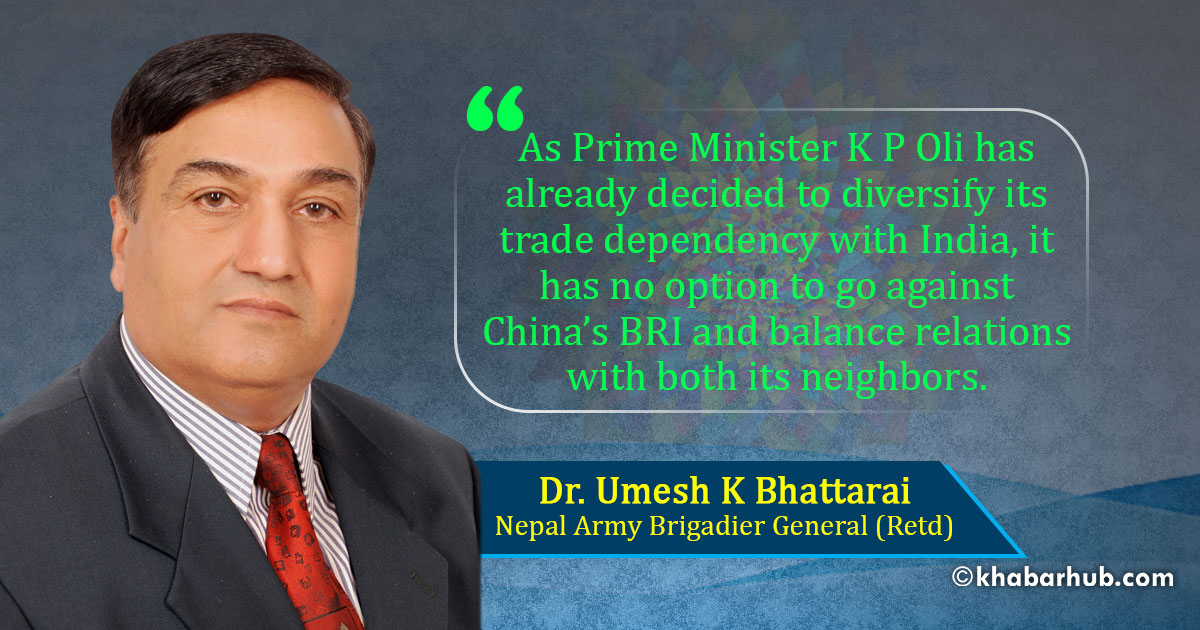Nepali geopolitics is debatable from its history. It has been used as a strength as well as weakness. King Prithvi Narayan Shah was inspired to unify Nepal with an eye to exploiting lucrative Tibetan market which was aloof from imperial Qing dynasty of China. In his early adolescence, he visited Banaras where he smelt East India Company’s growing interest towards Nepal and Tibet in quest of new markets.
The Shangri-La image of Tibet and surrounding Himalayas not only encouraged British but also Prithvi Narayan to integrate scattered states to garner power. His endeavor was fulfilled only after his death by his younger son Bahadur Shah and daughter-in-law Rajendra Laxmi.
It was King Mahendra who encouraged inter-mingling the people for cultural integration as well as migration; which was often criticized by Nepali Congress due to his conservative attitude towards the democratic process.
In fact, Nepal was integrated into one but its geopolitics remained diverged and divided. Himal, Pahad, and Tarai have different topography, climate, and vegetation. So as people are of different origin, religion, culture, and language.
The historians agree to the fact that Prithvi Narayan and his son could unite Nepal geographically but it remained diverged culturally. The process of cultural integration was introduced by Prithvi Narayan through his Dibya Upadesh but it was never implemented by his successors.
It was King Mahendra who encouraged inter-mingling the people for cultural integration as well as migration; which was often criticized by Nepali Congress due to his conservative attitude towards the democratic process. In fact, the credit should go to him to stabilize the nation for 30 years through his brainchild Panchayat system that paved the foundation of infrastructure development.
Basically, rising China and India both can be important rivals for the USA.
Stabilizing a nation is a major challenge for the ruler. King Mahendra managed to stabilize despite its sensitive geopolitics when China was newly transformed to communism and the USA emerged as a superpower after World War-II. The newly independent India was consolidating statehood at times brokering with the USA against China and former Soviet against Pakistan.
Bruce Riedel in his book “JFK’S Forgotten Crisis” mentions as to how then President Kennedy used PM Jawahar Lal Nehru to broker power to destabilize Tibet which was newly annexed by China. The USA used Mustang of Nepal to support the rebellion in Tibet. Finally, it was crashed by Nepal Army after the Chinese protest.
After this incident, the regime in Nepal learned a lesson for the time being. As human memory is short—after half a century the similar intention is again surfacing through Indo-Pacific Strategy. Basically, rising China and India both can be important rivals for the USA.
As long as India remains in its faith, it will cooperate with otherwise opt another partner to project its power. As PM Narendra Modi of India has already indicated the important role of China to stabilize Asia in general and South Asia in particular, USA might be in search of another platform from where it can play against China. As Pakistan has already shifted to Chinese bloc, Nepal may be the lucrative platform on next priority.
Perhaps the way PM Oli is tilting towards China in its Belt and Road Initiative (BRI) may be disliked by the USA. To attract, USA has offered ransom assistance of USD 50 billion with a hope to include it in Asia-Pacific Strategy.
As PM Oli has already decided to diversify its trade dependency with India, it has no option to go against China’s BRI and balance relations with both its neighbors. If India’s ongoing elections go in favor of Congress (I), then the US power equation may change as per the interest of the winning party. At present juncture, Nepal needs to watch the ongoing developments in its neighborhoods carefully and use its geopolitics as strength forever.
(The author, a former Brigadier General of Nepal Army, is a Ph.D. in Conflict Management and scholar of security and strategic studies)
Views expressed in this article are the author’s own and do not necessarily reflect the stance of Khabarhub.









Comment